1. Science: Adjustable excitons in bilayer graphene 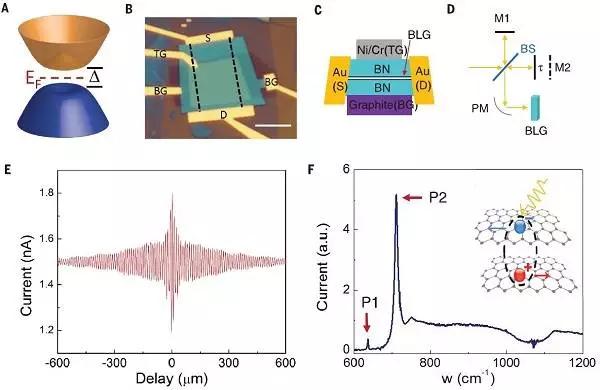 Paul L. McEuen of Cornell University, Associate Professor Wang Feng of the University of California at Berkeley, and James Hone of Columbia University (co-author) and others coated high quality BLG in boron nitride using photocurrent spectroscopy A remarkable exciton resonance phenomenon in the BLG. This phenomenon is characterized by a narrow linewidth that is adjustable from the mid-infrared to the terahertz range. These excitons follow an optical selection rule that is quite different from that of a conventional semiconductor, with an electron èµ spin winding number of two. Not only that, the external magnetic field can also trigger the energy-valley-exciton splitting, and its g factor can reach about 20. The discovery of these phenomena provides functionality for exploring the exciton physics of electrically tunable graphene systems. 2, Science: can twist three-dimensional mechanical metamaterials
Paul L. McEuen of Cornell University, Associate Professor Wang Feng of the University of California at Berkeley, and James Hone of Columbia University (co-author) and others coated high quality BLG in boron nitride using photocurrent spectroscopy A remarkable exciton resonance phenomenon in the BLG. This phenomenon is characterized by a narrow linewidth that is adjustable from the mid-infrared to the terahertz range. These excitons follow an optical selection rule that is quite different from that of a conventional semiconductor, with an electron èµ spin winding number of two. Not only that, the external magnetic field can also trigger the energy-valley-exciton splitting, and its g factor can reach about 20. The discovery of these phenomena provides functionality for exploring the exciton physics of electrically tunable graphene systems. 2, Science: can twist three-dimensional mechanical metamaterials  Martin Wegener (corresponding author) and others at the Karlsruhe Institute of Technology in Germany reported on the microstructured three-dimensional elastic chiral mechanical metamaterial, which overcomes the limitation that the distortion of the metamaterial is strictly zero. Through the study of Cauchy's theory of elastic mechanics, the mechanical metamaterials of the three-dimensional chiral microstructure of the micro-electron effective medium parameters are designed, fabricated, characterized and mapped. The distortion degree of freedom surpasses the Cauchy elasticity in quality. In the static case, the wavelength is theoretically infinite, so the ratio of the sample size L to the cell size is important. The study found that the strain distortion per axis measured exceeded 2°/% on all millimeter-scale samples. The mechanical metamaterials designed by Martin et al. are significantly distorted on the left and right sides when subjected to external forces, pointing out a more general strategy for developing materials with unusual deformation behavior. 3, Science: reduce the randomness of crystal nucleation to obtain sub-nanosecond data storage speed
Martin Wegener (corresponding author) and others at the Karlsruhe Institute of Technology in Germany reported on the microstructured three-dimensional elastic chiral mechanical metamaterial, which overcomes the limitation that the distortion of the metamaterial is strictly zero. Through the study of Cauchy's theory of elastic mechanics, the mechanical metamaterials of the three-dimensional chiral microstructure of the micro-electron effective medium parameters are designed, fabricated, characterized and mapped. The distortion degree of freedom surpasses the Cauchy elasticity in quality. In the static case, the wavelength is theoretically infinite, so the ratio of the sample size L to the cell size is important. The study found that the strain distortion per axis measured exceeded 2°/% on all millimeter-scale samples. The mechanical metamaterials designed by Martin et al. are significantly distorted on the left and right sides when subjected to external forces, pointing out a more general strategy for developing materials with unusual deformation behavior. 3, Science: reduce the randomness of crystal nucleation to obtain sub-nanosecond data storage speed  Professor Rao Feng, Associate Research Fellow, Shanghai Institute of Microsystem and Information Technology, Chinese Academy of Sciences, and Professor Zhang Wei (co-communication author) of Xi'an Jiaotong University, etc., used material calculation and design methods to regulate the nucleation rate of phase change materials and synthesize new phase change materials.钪锑碲(ScSbTe), which greatly reduces the nucleation time and achieves ultra-high speed writing speed of only 0.7 nanoseconds. At the same time, the operating power consumption of the device is reduced by nearly 90% compared to the conventional device. Through material calculations, the researchers clearly revealed the microscopic mechanism of ultrafast crystallization and ultra-low power consumption. 4. Science: High-speed plasma modulator in a single metal layer
Professor Rao Feng, Associate Research Fellow, Shanghai Institute of Microsystem and Information Technology, Chinese Academy of Sciences, and Professor Zhang Wei (co-communication author) of Xi'an Jiaotong University, etc., used material calculation and design methods to regulate the nucleation rate of phase change materials and synthesize new phase change materials.钪锑碲(ScSbTe), which greatly reduces the nucleation time and achieves ultra-high speed writing speed of only 0.7 nanoseconds. At the same time, the operating power consumption of the device is reduced by nearly 90% compared to the conventional device. Through material calculations, the researchers clearly revealed the microscopic mechanism of ultrafast crystallization and ultra-low power consumption. 4. Science: High-speed plasma modulator in a single metal layer 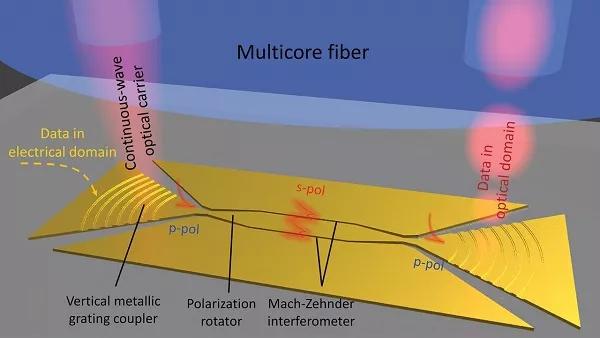 Zurich Federal Institute of Technology Masafumi Ayata and Juerg Leuthold (co-author) report a full-plasma electro-optic modulator with a speed of 116 gigabits per second, including vertical grating couplers, splitters, polarization rotators, phase shifting All elements, such as the device, are integrated into a single metal layer. The device can be based on a variety of smooth substrate surfaces with low operating energy, so plasma devices can be used in ultra-integrated, high-speed, low-cost technologies for a wide range of applications in sensing and communications. 5, Science: non-reciprocal laser oscillation in the cavity of any geometric topology
Zurich Federal Institute of Technology Masafumi Ayata and Juerg Leuthold (co-author) report a full-plasma electro-optic modulator with a speed of 116 gigabits per second, including vertical grating couplers, splitters, polarization rotators, phase shifting All elements, such as the device, are integrated into a single metal layer. The device can be based on a variety of smooth substrate surfaces with low operating energy, so plasma devices can be used in ultra-integrated, high-speed, low-cost technologies for a wide range of applications in sensing and communications. 5, Science: non-reciprocal laser oscillation in the cavity of any geometric topology 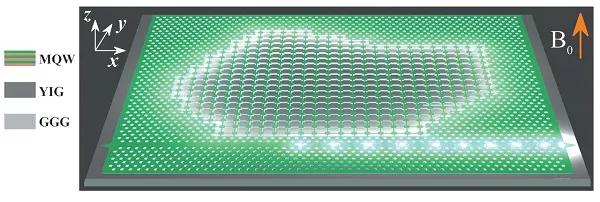 University of California, San Diego, Boubacar Kanté (corresponding author) and others reported a new type of laser that works in the communication band and is not affected by geometry, integrating non-reciprocal topological cavities, coupled from unidirectional photonic bandgap edge states to stimulated radiation. A specific waveguide output with an interval of more than 10 dB. Non-reciprocity arises from a unidirectional edge state at the boundary between a photon structure and a particular topological invariant. The results of the study opened up new avenues for the development of complex topological circuits of arbitrary shapes. 6. Science: femtosecond laser reshaping to prepare gold nanorods with ultra-narrow surface plasmon resonance
University of California, San Diego, Boubacar Kanté (corresponding author) and others reported a new type of laser that works in the communication band and is not affected by geometry, integrating non-reciprocal topological cavities, coupled from unidirectional photonic bandgap edge states to stimulated radiation. A specific waveguide output with an interval of more than 10 dB. Non-reciprocity arises from a unidirectional edge state at the boundary between a photon structure and a particular topological invariant. The results of the study opened up new avenues for the development of complex topological circuits of arbitrary shapes. 6. Science: femtosecond laser reshaping to prepare gold nanorods with ultra-narrow surface plasmon resonance  Andrés Guerrero-MartÃnez of Madrid Polytechnic University, Ovidio Peña-RodrÃguez and Luis M. Liz-Marzán of CIC biomaGUNE (co-communication author) remodeling gold nanorods using femtosecond lasers to obtain plasmas with ultra-narrow localized surfaces Resonance zone. This method provides a precise balance between the surface density of the nanorod surfactant and the effects of radiation, as the low cooling rate produces dramatic morphological changes. The results provide a simple, fast, and repeatable method for achieving high-quality gold nanorods with optical response and near theoretical limits. 7. Science: catalytic molten metal that converts methane directly into hydrogen and separable carbon
Andrés Guerrero-MartÃnez of Madrid Polytechnic University, Ovidio Peña-RodrÃguez and Luis M. Liz-Marzán of CIC biomaGUNE (co-communication author) remodeling gold nanorods using femtosecond lasers to obtain plasmas with ultra-narrow localized surfaces Resonance zone. This method provides a precise balance between the surface density of the nanorod surfactant and the effects of radiation, as the low cooling rate produces dramatic morphological changes. The results provide a simple, fast, and repeatable method for achieving high-quality gold nanorods with optical response and near theoretical limits. 7. Science: catalytic molten metal that converts methane directly into hydrogen and separable carbon 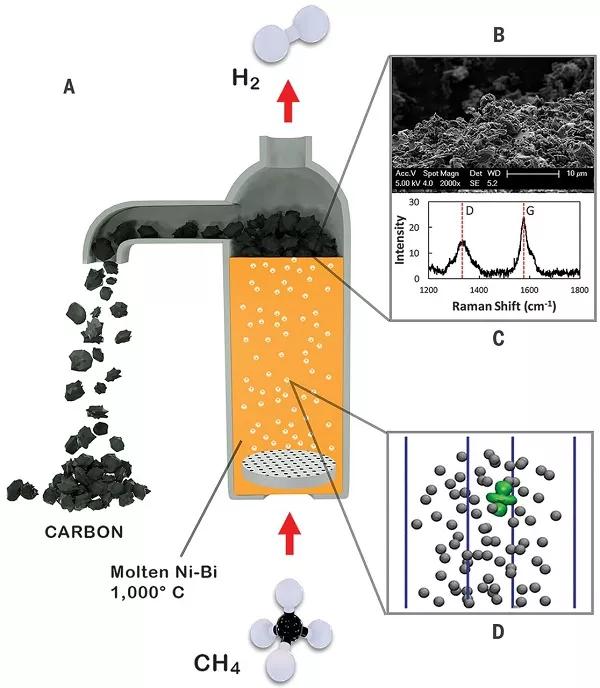 The University of California, Santa Barbara, Horia Metiu and Eric W. McFarland (co-author) and others prepared 27% Ni-73% Bi alloy, which can catalyze methane pyrolysis at 1065 °C without CO2 and other by-products. Generated with a conversion rate of up to 95%. Through calculation, it is shown that the active metal in the molten catalytic system is negatively charged in atomic-level dispersion, and the carbon generated by the catalytic reaction can be floated and can be removed, thereby avoiding the problem that the solid catalyst fails due to product carbon deposition. 8, Nature: hexagonal ice crystal or non-most stable structure
The University of California, Santa Barbara, Horia Metiu and Eric W. McFarland (co-author) and others prepared 27% Ni-73% Bi alloy, which can catalyze methane pyrolysis at 1065 °C without CO2 and other by-products. Generated with a conversion rate of up to 95%. Through calculation, it is shown that the active metal in the molten catalytic system is negatively charged in atomic-level dispersion, and the carbon generated by the catalytic reaction can be floated and can be removed, thereby avoiding the problem that the solid catalyst fails due to product carbon deposition. 8, Nature: hexagonal ice crystal or non-most stable structure 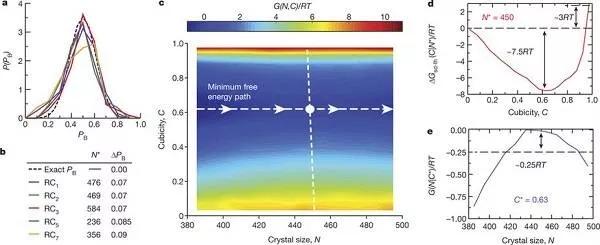 Valeria Molinero (corresponding author) and others at the University of Utah, USA, based on the mW water model ("Thermal Dynamic Stacking Fault in Ice" method), using sampling and free energy calculations, confirmed that when the crystal size increases to more than 100,000 molecules, Cubic and The mixed entropy of the six-sided ice layer makes the disorderly stacked ice a more stable phase. At 230K, the grain of the disordered stack is 14 KJ/mol more stable than the hexagonal grain, and the nucleation rate is at least three orders of magnitude faster than the traditional nucleation theory. The rate of nucleation is affected by temperature, which is particularly pronounced under global warming conditions, and may also affect cloud formation and the model of ice particle count. Therefore, the author believes that when changing from experimental conditions to the temperature occurring in the cloud, the nucleation rate of extrapolated ice should be analyzed. The traditional nucleation theory needs to be corrected. The influence of ice crystal size on the driving force of crystallization should be considered. 9. Nature: The rheological behavior of granular materials is similar to complex fluids.
Valeria Molinero (corresponding author) and others at the University of Utah, USA, based on the mW water model ("Thermal Dynamic Stacking Fault in Ice" method), using sampling and free energy calculations, confirmed that when the crystal size increases to more than 100,000 molecules, Cubic and The mixed entropy of the six-sided ice layer makes the disorderly stacked ice a more stable phase. At 230K, the grain of the disordered stack is 14 KJ/mol more stable than the hexagonal grain, and the nucleation rate is at least three orders of magnitude faster than the traditional nucleation theory. The rate of nucleation is affected by temperature, which is particularly pronounced under global warming conditions, and may also affect cloud formation and the model of ice particle count. Therefore, the author believes that when changing from experimental conditions to the temperature occurring in the cloud, the nucleation rate of extrapolated ice should be analyzed. The traditional nucleation theory needs to be corrected. The influence of ice crystal size on the driving force of crystallization should be considered. 9. Nature: The rheological behavior of granular materials is similar to complex fluids.  Professor Wang Yujie from Shanghai Jiaotong University and Walter Kob (co-author of the communication) from Montpellier University used X-ray tomography imaging techniques to study the microscopic dynamics of a three-dimensional particle system with static cyclic shear, confirming the microscale of the particles. The relaxation kinetics follows a law of oscillatory shear. It is found that the distribution and displacement of the particles can be described by Gumbel's law, resulting in a general sense of particle solids, which is actually a critical phase at the liquid-solid boundary, under external perturbations. It will fluidize, more like a complex fluid. 10. Nature: Atom-grade Rh-dispersed catalyst catalyzes methane oxidation
Professor Wang Yujie from Shanghai Jiaotong University and Walter Kob (co-author of the communication) from Montpellier University used X-ray tomography imaging techniques to study the microscopic dynamics of a three-dimensional particle system with static cyclic shear, confirming the microscale of the particles. The relaxation kinetics follows a law of oscillatory shear. It is found that the distribution and displacement of the particles can be described by Gumbel's law, resulting in a general sense of particle solids, which is actually a critical phase at the liquid-solid boundary, under external perturbations. It will fluidize, more like a complex fluid. 10. Nature: Atom-grade Rh-dispersed catalyst catalyzes methane oxidation 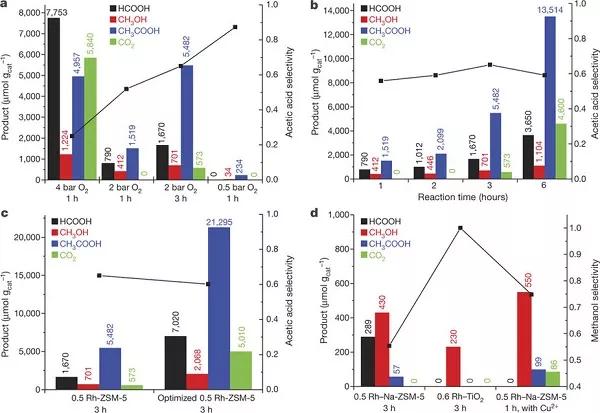 Using the impregnation method, Maria Flytzani-Stephanopoulos (communication author) and others at Tufts University prepared an atomic-scale dispersed mononuclear Rh/Zeolite, Rh/TiO2 catalyst, which can directly catalyze methane under mild conditions using oxygen and carbon monoxide. Oxidation to methanol and acetic acid. The two products are independent reaction paths, and the selectivity of the product can be regulated by changing the catalytic conditions. This provides a new high activity catalyst for methanol direct oxygen and serves as a guide for further optimization of the catalyst and practical application. 11. Nature: Site and stereoselective functionalization of non-activated tertiary CH bonds
Using the impregnation method, Maria Flytzani-Stephanopoulos (communication author) and others at Tufts University prepared an atomic-scale dispersed mononuclear Rh/Zeolite, Rh/TiO2 catalyst, which can directly catalyze methane under mild conditions using oxygen and carbon monoxide. Oxidation to methanol and acetic acid. The two products are independent reaction paths, and the selectivity of the product can be regulated by changing the catalytic conditions. This provides a new high activity catalyst for methanol direct oxygen and serves as a guide for further optimization of the catalyst and practical application. 11. Nature: Site and stereoselective functionalization of non-activated tertiary CH bonds 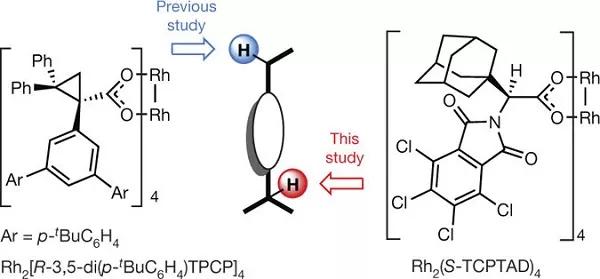 Emory University Huw ML Davies (corresponding author) et al. reported a double-ruthenium catalyst with different reactivity. This new catalyst can precisely select sites on the most accessible three-stage CH bond instead of secondary CH bonds. . With this catalyst, some natural products can be modified, including sterols, vitamin E and the like. It indicates that this method is suitable for the later functionalization of complex molecules, and selective regulation of different sites can be achieved by selecting a suitable catalyst. Expanding the design of complex catalysts can be further applied to the regulation of CH bond functionalization and the synthesis of complex molecules.
Emory University Huw ML Davies (corresponding author) et al. reported a double-ruthenium catalyst with different reactivity. This new catalyst can precisely select sites on the most accessible three-stage CH bond instead of secondary CH bonds. . With this catalyst, some natural products can be modified, including sterols, vitamin E and the like. It indicates that this method is suitable for the later functionalization of complex molecules, and selective regulation of different sites can be achieved by selecting a suitable catalyst. Expanding the design of complex catalysts can be further applied to the regulation of CH bond functionalization and the synthesis of complex molecules.
 Paul L. McEuen of Cornell University, Associate Professor Wang Feng of the University of California at Berkeley, and James Hone of Columbia University (co-author) and others coated high quality BLG in boron nitride using photocurrent spectroscopy A remarkable exciton resonance phenomenon in the BLG. This phenomenon is characterized by a narrow linewidth that is adjustable from the mid-infrared to the terahertz range. These excitons follow an optical selection rule that is quite different from that of a conventional semiconductor, with an electron èµ spin winding number of two. Not only that, the external magnetic field can also trigger the energy-valley-exciton splitting, and its g factor can reach about 20. The discovery of these phenomena provides functionality for exploring the exciton physics of electrically tunable graphene systems. 2, Science: can twist three-dimensional mechanical metamaterials
Paul L. McEuen of Cornell University, Associate Professor Wang Feng of the University of California at Berkeley, and James Hone of Columbia University (co-author) and others coated high quality BLG in boron nitride using photocurrent spectroscopy A remarkable exciton resonance phenomenon in the BLG. This phenomenon is characterized by a narrow linewidth that is adjustable from the mid-infrared to the terahertz range. These excitons follow an optical selection rule that is quite different from that of a conventional semiconductor, with an electron èµ spin winding number of two. Not only that, the external magnetic field can also trigger the energy-valley-exciton splitting, and its g factor can reach about 20. The discovery of these phenomena provides functionality for exploring the exciton physics of electrically tunable graphene systems. 2, Science: can twist three-dimensional mechanical metamaterials  Martin Wegener (corresponding author) and others at the Karlsruhe Institute of Technology in Germany reported on the microstructured three-dimensional elastic chiral mechanical metamaterial, which overcomes the limitation that the distortion of the metamaterial is strictly zero. Through the study of Cauchy's theory of elastic mechanics, the mechanical metamaterials of the three-dimensional chiral microstructure of the micro-electron effective medium parameters are designed, fabricated, characterized and mapped. The distortion degree of freedom surpasses the Cauchy elasticity in quality. In the static case, the wavelength is theoretically infinite, so the ratio of the sample size L to the cell size is important. The study found that the strain distortion per axis measured exceeded 2°/% on all millimeter-scale samples. The mechanical metamaterials designed by Martin et al. are significantly distorted on the left and right sides when subjected to external forces, pointing out a more general strategy for developing materials with unusual deformation behavior. 3, Science: reduce the randomness of crystal nucleation to obtain sub-nanosecond data storage speed
Martin Wegener (corresponding author) and others at the Karlsruhe Institute of Technology in Germany reported on the microstructured three-dimensional elastic chiral mechanical metamaterial, which overcomes the limitation that the distortion of the metamaterial is strictly zero. Through the study of Cauchy's theory of elastic mechanics, the mechanical metamaterials of the three-dimensional chiral microstructure of the micro-electron effective medium parameters are designed, fabricated, characterized and mapped. The distortion degree of freedom surpasses the Cauchy elasticity in quality. In the static case, the wavelength is theoretically infinite, so the ratio of the sample size L to the cell size is important. The study found that the strain distortion per axis measured exceeded 2°/% on all millimeter-scale samples. The mechanical metamaterials designed by Martin et al. are significantly distorted on the left and right sides when subjected to external forces, pointing out a more general strategy for developing materials with unusual deformation behavior. 3, Science: reduce the randomness of crystal nucleation to obtain sub-nanosecond data storage speed  Professor Rao Feng, Associate Research Fellow, Shanghai Institute of Microsystem and Information Technology, Chinese Academy of Sciences, and Professor Zhang Wei (co-communication author) of Xi'an Jiaotong University, etc., used material calculation and design methods to regulate the nucleation rate of phase change materials and synthesize new phase change materials.钪锑碲(ScSbTe), which greatly reduces the nucleation time and achieves ultra-high speed writing speed of only 0.7 nanoseconds. At the same time, the operating power consumption of the device is reduced by nearly 90% compared to the conventional device. Through material calculations, the researchers clearly revealed the microscopic mechanism of ultrafast crystallization and ultra-low power consumption. 4. Science: High-speed plasma modulator in a single metal layer
Professor Rao Feng, Associate Research Fellow, Shanghai Institute of Microsystem and Information Technology, Chinese Academy of Sciences, and Professor Zhang Wei (co-communication author) of Xi'an Jiaotong University, etc., used material calculation and design methods to regulate the nucleation rate of phase change materials and synthesize new phase change materials.钪锑碲(ScSbTe), which greatly reduces the nucleation time and achieves ultra-high speed writing speed of only 0.7 nanoseconds. At the same time, the operating power consumption of the device is reduced by nearly 90% compared to the conventional device. Through material calculations, the researchers clearly revealed the microscopic mechanism of ultrafast crystallization and ultra-low power consumption. 4. Science: High-speed plasma modulator in a single metal layer  Zurich Federal Institute of Technology Masafumi Ayata and Juerg Leuthold (co-author) report a full-plasma electro-optic modulator with a speed of 116 gigabits per second, including vertical grating couplers, splitters, polarization rotators, phase shifting All elements, such as the device, are integrated into a single metal layer. The device can be based on a variety of smooth substrate surfaces with low operating energy, so plasma devices can be used in ultra-integrated, high-speed, low-cost technologies for a wide range of applications in sensing and communications. 5, Science: non-reciprocal laser oscillation in the cavity of any geometric topology
Zurich Federal Institute of Technology Masafumi Ayata and Juerg Leuthold (co-author) report a full-plasma electro-optic modulator with a speed of 116 gigabits per second, including vertical grating couplers, splitters, polarization rotators, phase shifting All elements, such as the device, are integrated into a single metal layer. The device can be based on a variety of smooth substrate surfaces with low operating energy, so plasma devices can be used in ultra-integrated, high-speed, low-cost technologies for a wide range of applications in sensing and communications. 5, Science: non-reciprocal laser oscillation in the cavity of any geometric topology  University of California, San Diego, Boubacar Kanté (corresponding author) and others reported a new type of laser that works in the communication band and is not affected by geometry, integrating non-reciprocal topological cavities, coupled from unidirectional photonic bandgap edge states to stimulated radiation. A specific waveguide output with an interval of more than 10 dB. Non-reciprocity arises from a unidirectional edge state at the boundary between a photon structure and a particular topological invariant. The results of the study opened up new avenues for the development of complex topological circuits of arbitrary shapes. 6. Science: femtosecond laser reshaping to prepare gold nanorods with ultra-narrow surface plasmon resonance
University of California, San Diego, Boubacar Kanté (corresponding author) and others reported a new type of laser that works in the communication band and is not affected by geometry, integrating non-reciprocal topological cavities, coupled from unidirectional photonic bandgap edge states to stimulated radiation. A specific waveguide output with an interval of more than 10 dB. Non-reciprocity arises from a unidirectional edge state at the boundary between a photon structure and a particular topological invariant. The results of the study opened up new avenues for the development of complex topological circuits of arbitrary shapes. 6. Science: femtosecond laser reshaping to prepare gold nanorods with ultra-narrow surface plasmon resonance  Andrés Guerrero-MartÃnez of Madrid Polytechnic University, Ovidio Peña-RodrÃguez and Luis M. Liz-Marzán of CIC biomaGUNE (co-communication author) remodeling gold nanorods using femtosecond lasers to obtain plasmas with ultra-narrow localized surfaces Resonance zone. This method provides a precise balance between the surface density of the nanorod surfactant and the effects of radiation, as the low cooling rate produces dramatic morphological changes. The results provide a simple, fast, and repeatable method for achieving high-quality gold nanorods with optical response and near theoretical limits. 7. Science: catalytic molten metal that converts methane directly into hydrogen and separable carbon
Andrés Guerrero-MartÃnez of Madrid Polytechnic University, Ovidio Peña-RodrÃguez and Luis M. Liz-Marzán of CIC biomaGUNE (co-communication author) remodeling gold nanorods using femtosecond lasers to obtain plasmas with ultra-narrow localized surfaces Resonance zone. This method provides a precise balance between the surface density of the nanorod surfactant and the effects of radiation, as the low cooling rate produces dramatic morphological changes. The results provide a simple, fast, and repeatable method for achieving high-quality gold nanorods with optical response and near theoretical limits. 7. Science: catalytic molten metal that converts methane directly into hydrogen and separable carbon  The University of California, Santa Barbara, Horia Metiu and Eric W. McFarland (co-author) and others prepared 27% Ni-73% Bi alloy, which can catalyze methane pyrolysis at 1065 °C without CO2 and other by-products. Generated with a conversion rate of up to 95%. Through calculation, it is shown that the active metal in the molten catalytic system is negatively charged in atomic-level dispersion, and the carbon generated by the catalytic reaction can be floated and can be removed, thereby avoiding the problem that the solid catalyst fails due to product carbon deposition. 8, Nature: hexagonal ice crystal or non-most stable structure
The University of California, Santa Barbara, Horia Metiu and Eric W. McFarland (co-author) and others prepared 27% Ni-73% Bi alloy, which can catalyze methane pyrolysis at 1065 °C without CO2 and other by-products. Generated with a conversion rate of up to 95%. Through calculation, it is shown that the active metal in the molten catalytic system is negatively charged in atomic-level dispersion, and the carbon generated by the catalytic reaction can be floated and can be removed, thereby avoiding the problem that the solid catalyst fails due to product carbon deposition. 8, Nature: hexagonal ice crystal or non-most stable structure  Valeria Molinero (corresponding author) and others at the University of Utah, USA, based on the mW water model ("Thermal Dynamic Stacking Fault in Ice" method), using sampling and free energy calculations, confirmed that when the crystal size increases to more than 100,000 molecules, Cubic and The mixed entropy of the six-sided ice layer makes the disorderly stacked ice a more stable phase. At 230K, the grain of the disordered stack is 14 KJ/mol more stable than the hexagonal grain, and the nucleation rate is at least three orders of magnitude faster than the traditional nucleation theory. The rate of nucleation is affected by temperature, which is particularly pronounced under global warming conditions, and may also affect cloud formation and the model of ice particle count. Therefore, the author believes that when changing from experimental conditions to the temperature occurring in the cloud, the nucleation rate of extrapolated ice should be analyzed. The traditional nucleation theory needs to be corrected. The influence of ice crystal size on the driving force of crystallization should be considered. 9. Nature: The rheological behavior of granular materials is similar to complex fluids.
Valeria Molinero (corresponding author) and others at the University of Utah, USA, based on the mW water model ("Thermal Dynamic Stacking Fault in Ice" method), using sampling and free energy calculations, confirmed that when the crystal size increases to more than 100,000 molecules, Cubic and The mixed entropy of the six-sided ice layer makes the disorderly stacked ice a more stable phase. At 230K, the grain of the disordered stack is 14 KJ/mol more stable than the hexagonal grain, and the nucleation rate is at least three orders of magnitude faster than the traditional nucleation theory. The rate of nucleation is affected by temperature, which is particularly pronounced under global warming conditions, and may also affect cloud formation and the model of ice particle count. Therefore, the author believes that when changing from experimental conditions to the temperature occurring in the cloud, the nucleation rate of extrapolated ice should be analyzed. The traditional nucleation theory needs to be corrected. The influence of ice crystal size on the driving force of crystallization should be considered. 9. Nature: The rheological behavior of granular materials is similar to complex fluids.  Professor Wang Yujie from Shanghai Jiaotong University and Walter Kob (co-author of the communication) from Montpellier University used X-ray tomography imaging techniques to study the microscopic dynamics of a three-dimensional particle system with static cyclic shear, confirming the microscale of the particles. The relaxation kinetics follows a law of oscillatory shear. It is found that the distribution and displacement of the particles can be described by Gumbel's law, resulting in a general sense of particle solids, which is actually a critical phase at the liquid-solid boundary, under external perturbations. It will fluidize, more like a complex fluid. 10. Nature: Atom-grade Rh-dispersed catalyst catalyzes methane oxidation
Professor Wang Yujie from Shanghai Jiaotong University and Walter Kob (co-author of the communication) from Montpellier University used X-ray tomography imaging techniques to study the microscopic dynamics of a three-dimensional particle system with static cyclic shear, confirming the microscale of the particles. The relaxation kinetics follows a law of oscillatory shear. It is found that the distribution and displacement of the particles can be described by Gumbel's law, resulting in a general sense of particle solids, which is actually a critical phase at the liquid-solid boundary, under external perturbations. It will fluidize, more like a complex fluid. 10. Nature: Atom-grade Rh-dispersed catalyst catalyzes methane oxidation  Using the impregnation method, Maria Flytzani-Stephanopoulos (communication author) and others at Tufts University prepared an atomic-scale dispersed mononuclear Rh/Zeolite, Rh/TiO2 catalyst, which can directly catalyze methane under mild conditions using oxygen and carbon monoxide. Oxidation to methanol and acetic acid. The two products are independent reaction paths, and the selectivity of the product can be regulated by changing the catalytic conditions. This provides a new high activity catalyst for methanol direct oxygen and serves as a guide for further optimization of the catalyst and practical application. 11. Nature: Site and stereoselective functionalization of non-activated tertiary CH bonds
Using the impregnation method, Maria Flytzani-Stephanopoulos (communication author) and others at Tufts University prepared an atomic-scale dispersed mononuclear Rh/Zeolite, Rh/TiO2 catalyst, which can directly catalyze methane under mild conditions using oxygen and carbon monoxide. Oxidation to methanol and acetic acid. The two products are independent reaction paths, and the selectivity of the product can be regulated by changing the catalytic conditions. This provides a new high activity catalyst for methanol direct oxygen and serves as a guide for further optimization of the catalyst and practical application. 11. Nature: Site and stereoselective functionalization of non-activated tertiary CH bonds  Emory University Huw ML Davies (corresponding author) et al. reported a double-ruthenium catalyst with different reactivity. This new catalyst can precisely select sites on the most accessible three-stage CH bond instead of secondary CH bonds. . With this catalyst, some natural products can be modified, including sterols, vitamin E and the like. It indicates that this method is suitable for the later functionalization of complex molecules, and selective regulation of different sites can be achieved by selecting a suitable catalyst. Expanding the design of complex catalysts can be further applied to the regulation of CH bond functionalization and the synthesis of complex molecules.
Emory University Huw ML Davies (corresponding author) et al. reported a double-ruthenium catalyst with different reactivity. This new catalyst can precisely select sites on the most accessible three-stage CH bond instead of secondary CH bonds. . With this catalyst, some natural products can be modified, including sterols, vitamin E and the like. It indicates that this method is suitable for the later functionalization of complex molecules, and selective regulation of different sites can be achieved by selecting a suitable catalyst. Expanding the design of complex catalysts can be further applied to the regulation of CH bond functionalization and the synthesis of complex molecules.Poly Solar Panel,230W Solar Panel,210W Polysilicon Solar Panel,230 Watt Solar Panel
Zhejiang G&P New Energy Technology Co.,Ltd , https://www.solarpanelgp.com
